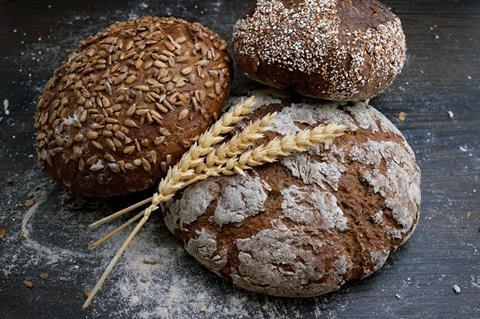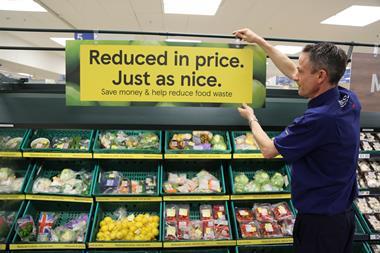The commodity surged on the back of the Ukraine war. Now American and European crops are suffering from heatwaves and drought
Consumers facing stubbornly high inflation were dealt yet another blow last week, as The Grocer reported they could be forced to fork out more for pasta in coming months.
Adverse weather in areas of North America has been affecting durum wheat production, helping to push global prices of the key commodity back up over the past few weeks.
But pressure on wheat markets, from both adverse weather and Russia’s invasion of Ukraine, is by now a familiar story. So what exactly is happening in wider global wheat markets now, and what is the outlook for supply and prices in the months ahead?
Production of durum wheat has fallen by as much as 20% year on year in Canada – the largest global exporter of the crop – due to persistent heat and dry weather across the western Prairies region, according to recent Mintec data.
Dry weather has also hit US production of durum wheat, which is down 10% year on year. As a result, market prices of the crop from Canada and the US have this month reached their highest in a year.

The drop in supply from the US and Canada is adding pressure to producing countries in Europe, including Italy and France, which rely on Canadian imports as they “do not have enough domestic production to meet the demand”, says Mintec grains analyst Zanna Aleksahhina. The challenges are compounded by the fact Italy is facing poor quality issues after an excessive rain period in May and June, with suppliers warning this would have inevitable repercussions on the price of pasta.
The price of semolina in Italy has already gone up €0.30/kg since the beginning of July to date, and further increases are expected, says Giuseppe Vacca, commercial director for exports at pasta brand Pastificio Liguori.
These widespread heatwaves in the northern hemisphere are threatening crops, an HSBC grains report notes – meaning other wheat producing countries such as Italy, Turkey and Algeria are also under pressure.
La Niña and El Niño
The trouble isn’t just about heatwaves, though. The American continents have just been through three consecutive years of La Niña, which has brought serious drought conditions to the winter wheat belt of the US Great Plains.
Drought levels in 2020, 2021, and 2022 were among the highest in the past two decades, and the US Climate Prediction Center (CPC) said earlier this year that winter wheat crop yields in the country had been on decline for four years straight. That has been reflected on the markets, with US wheat futures steadily climbing since the start of 2020.
Normally, the impact of dry weather on production across the Americas tends to be offset by increased output in other areas of the world such as Asia and Australia, which actually benefited from the wet conditions brought by La Niña over the past few seasons.
However, another cyclical weather phenomenon – El Niño – is expected to significantly disrupt crop cycles again starting this month.
El Niño is set to bring months of extreme heat to some parts of Central America, South Asia and Australia. It is “typically correlated with reduced grain supply and yields, and higher grains prices”, the HSBC report notes.
But it is hard to quantify the impacts at this time, says Rabobank head of agricommodities Carlos Mera. El Niño “tends to make SE Asia and Australia dryer than usual, and we already started to see that dryness over India and parts of Australia”, he says. It is also known for getting stronger towards the end of the year, making it difficult to predict what will happen to global output and food prices, Mera adds.

Geopolitical instability
But weather is not the only factor causing significant disruption to wheat. One of the biggest blows to global wheat markets in recent history came last year, when the conflict between two of the world’s largest producers – Russia and Ukraine – began in February. Before Russia invaded, Ukraine typically supplied 10% of the world’s wheat. With its agricultural and export operations suddenly disrupted, global supply slumped and prices skyrocketed.
Hopes revived in July last year when an agreement was brokered by the United Nations and Turkey to open a safe maritime humanitarian corridor in the Black Sea. The deal helped stabilise wheat stock prices – as exports from both Russia and Ukraine picked up, prices slowly but surely started to fall. By the end of June 2023, almost 33 million tonnes of grain and other foodstuffs had been exported via the Black Sea Grain Initiative. By then, wheat futures had lowered from their 2022 peaks of nearly $1,300 per bushel to pre-war levels, hovering at around $560/bu.
However, Russian president Vladimir Putin pulled out of the agreement in July. The Kremlin has since been attacking Ukrainian ports and grain silos and warehouses to impede the country’s ability to export grains, which forced prices up again for a few days in July. Ironically, tightened Ukrainian supply is being balanced by Russian exports, which “continue to be strong”, Rabobank’s Mera says.

Domestic production
The “broad working assumption for grains supply forecasts is that exports are able to make it out of the region in 2023/24”, HSBC analysts say. However, there “remains considerable uncertainty, particularly given the heightened global geopolitical tensions”, which could continue to support prices in the months ahead.
Unlike in North America, the warmer spells felt in the UK in 2022 actually helped fuel cereal production by 9.4% to almost 21 million tonnes last year. Prolonged dry conditions through summer led to an early harvest and lower than normal moisture content in the harvested crops, according to Defra. But the outlook for the 2023/2024 season doesn’t look as rosy.
“The damp July has really capped off yield, rather than improved yield like it did last year,” says Matt Culley, NFU crops chair. “Last year, we had a really hot June and July and that really built in yield and weight into the grain, while this year it is the polar opposite – damp and cold, and therefore we are not going to get the high weights of grain.”
This will see Britain also dependent on high-quality wheat imports, helping fuel price increases.
Consumers might find some relief in knowing any short-term stock price increases will take a while to be reflected on supermarket shelves, depending on the types of contracts retail buyers have with their suppliers. Some grocers “may be well covered for the next six to 12 months”, Mintec’s Aleksahhina points out.
Beyond that, we can expect to see household goods such as flour, bread and pasta increase in price, with the full extent of that rise remaining to be seen.




















No comments yet